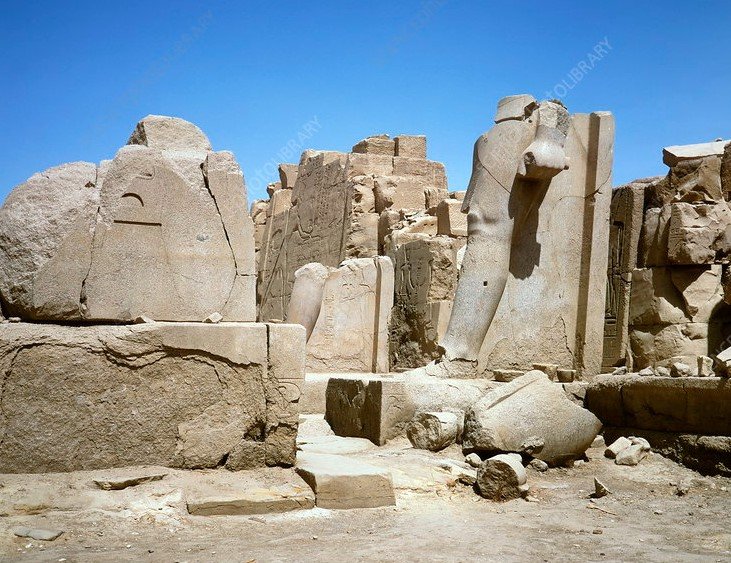A Chinese archaeological team from the Shanghai Museum is set to join forces with Egyptian experts for a major dig at the Sekhmet Temple ruins in Memphis, starting in October 2025. This joint project aims to uncover secrets about ancient Egyptian writing, society, and religion at a site over 5,100 years old, building on growing ties between the two nations.
Project Background and Recent Triggers
The initiative follows the huge success of the “On Top of the Pyramid: The Civilisation of Ancient Egypt” exhibition at the Shanghai Museum. That show ran for 13 months and drew over 2.77 million visitors before closing in August 2025. Museum leaders saw it as a perfect lead-in to deeper fieldwork.
Officials from the museum surveyed 10 potential sites in Egypt last September. They picked the Sekhmet Temple for its rich history and untapped potential. The temple honors Sekhmet, the lioness goddess linked to war and healing in ancient myths.
This move comes amid broader China-Egypt partnerships. Recent years have seen joint efforts in infrastructure, trade, and now cultural heritage. For instance, a 2024 agreement boosted tourism exchanges, setting the stage for this archaeological collaboration.
Details of the Joint Excavation
The team, led by Shanghai Museum deputy director Chen Jie, includes experts from Peking University and other institutions. They plan a two-month excavation season starting in October 2025. Work will focus on the temple complex on the Nile’s west bank, part of the ancient capital Memphis.

Egypt’s Supreme Council of Antiquities partners in the effort. The group aims to explore the site’s layout, artifacts, and inscriptions. Early surveys suggest clues to how early Egyptians developed writing and organized their communities.
Here are key goals for the project:
- Uncover origins of hieroglyphic writing systems.
- Study social hierarchies through burial sites and structures.
- Examine religious practices tied to gods like Ptah and Sekhmet.
Previous Chinese digs in Egypt provide a model. Since 2018, a team from the Chinese Academy of Social Sciences has worked at the Temple of Montu in Luxor. They found chapels, settlements, and walls from the time of Pharaoh Amenhotep III.
Historical Importance of Sekhmet Temple
Memphis served as Egypt’s first capital around 3100 BCE. The Sekhmet Temple, dedicated to the fierce goddess, dates back over 5,100 years. It stands as a key spot for understanding early dynasties and their beliefs.
Archaeologists believe the ruins hold evidence of how religion shaped daily life. Sekhmet statues and temples often symbolized protection and power. Past finds in nearby areas include massive statues and ritual items, hinting at what this dig might reveal.
The site’s age rivals other ancient wonders. For comparison, it predates the Great Pyramids by centuries. Experts say fresh eyes from the Chinese team could spot details overlooked by traditional Western-led studies.
Broader Impacts on Global Archaeology
This project marks a shift in Egyptology, long dominated by European and American teams. China’s involvement brings new technology and perspectives. Drones, 3D scanning, and AI analysis could speed up discoveries and preserve fragile ruins.
It also strengthens diplomatic bonds. Beijing views the dig as a way to boost cultural exchanges. Egyptian officials welcome the partnership, seeing it as a chance to share knowledge and attract more visitors to heritage sites.
Challenges remain, though. Harsh desert conditions and funding needs could test the team. Yet, success here might inspire similar collaborations elsewhere, like in Sudan or Greece.
| Aspect | Details |
|---|---|
| Location | Sekhmet Temple, Memphis, Egypt |
| Start Date | October 2025 |
| Duration | Initial two-month season |
| Key Partners | Shanghai Museum, Peking University, Egypt’s Supreme Council of Antiquities |
| Main Focus | Writing origins, social structures, religious beliefs |
| Historical Age | Over 5,100 years |
What This Means for the Future
Looking ahead, the project could yield artifacts that reshape our view of ancient Egypt. Early results might appear by late 2025, with plans for exhibitions or publications to share findings worldwide.
This dig fits into a trend of international teamwork in archaeology. Recent examples include a 2024 joint U.S.-Egyptian effort at Saqqara that uncovered Old Kingdom tombs. Such partnerships highlight how global cooperation unlocks history’s mysteries.
Experts predict more Chinese roles in Middle Eastern sites, given growing investments. For now, all eyes turn to Sekhmet Temple, where ancient secrets await.
What do you think about this cross-cultural dig? Share your thoughts in the comments below, and pass this article along to fellow history buffs to spark discussions.
